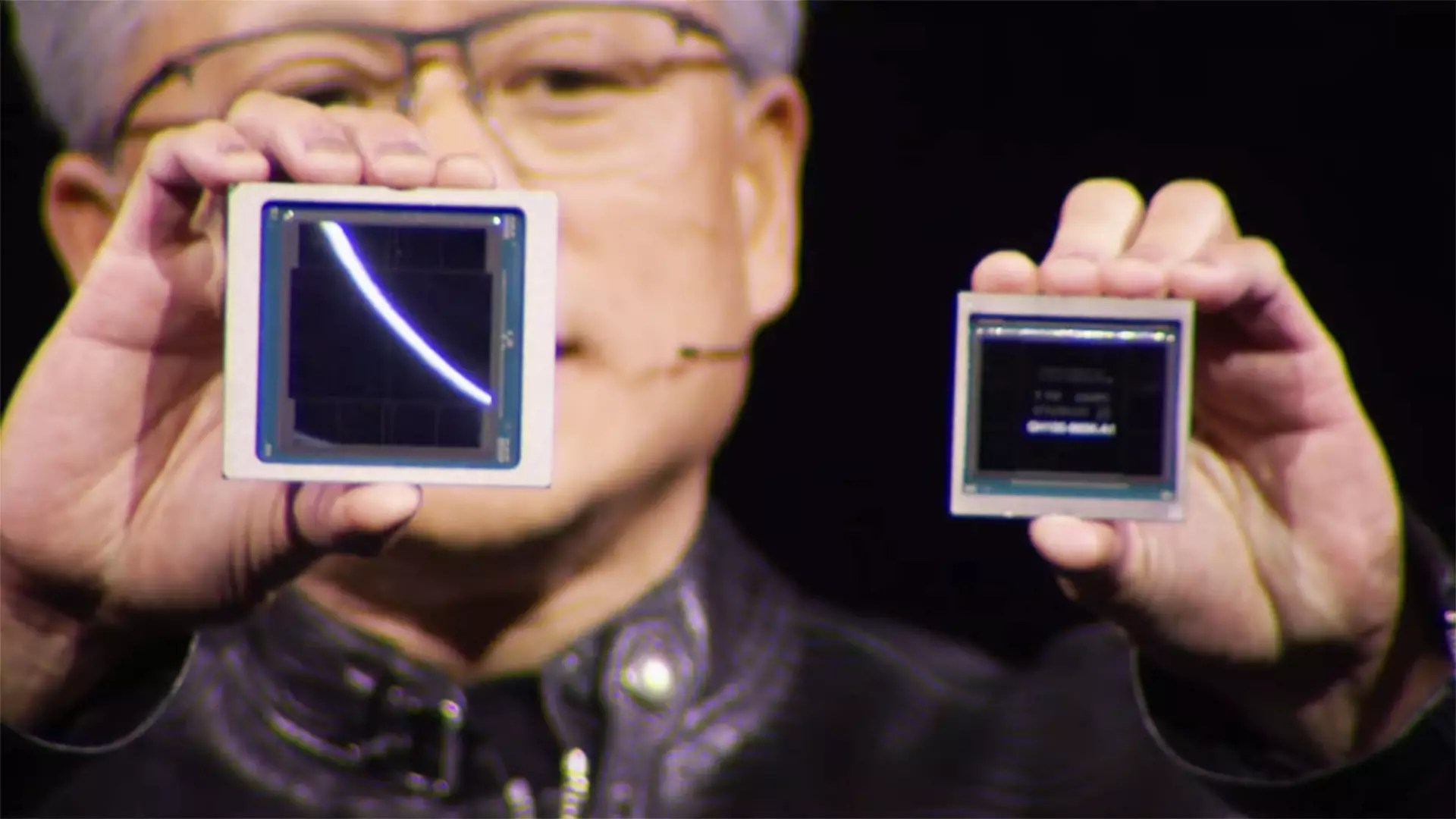Nvidia has found itself in a precarious situation amidst the escalating tensions between the United States and China. As the leading force in graphics processing units (GPUs) and artificial intelligence (AI) computing, the company has always been at the forefront of technological advancement. However, recent export restrictions imposed by the U.S. government are reshaping the dynamics of the market, leading Nvidia to voice concerns about the future of AI research in the world, particularly in China. Nvidia’s chief scientist, Bill Dally, has revealed potential repercussions of these restrictions, notably Huawei’s recruitment of ex-Nvidia researchers, thus signaling a notable shift in the competitive landscape.
The Impact of U.S. Export Restrictions
Nvidia’s latest stance suggests that the U.S. government’s measures may inadvertently enhance China’s AI capabilities. Dally’s interpretation of the situation is profound: as the U.S. limits technology transfer, it has inadvertently empowered Chinese tech giants like Huawei to develop home-grown alternatives to Nvidia’s offerings. The increase in AI researchers congregating in China—from one-third of the global talent pool in 2019 to nearly fifty percent today—could potentially further exacerbate the imbalance. It raises an alarming question: are the restrictions really serving U.S. interests, or are they merely propelling China’s technological advancements?
Nvidia isn’t merely sounding alarms for altruistic reasons. One must consider the implications for its business as well; the company has publicly stated it stands to lose a staggering $8 billion due to these limitations. This isn’t merely a matter of competing in a global marketplace; it is a dire financial predicament affecting the very core of Nvidia’s operations. Concerns about lost revenue have led Nvidia to push back against these prohibitive policies, arguing that they foster an environment where U.S. technology falls behind on the global stage.
Huawei: A Rising Challenge
The emergence of Huawei as a formidable competitor can be traced back to the U.S. government’s constraints. With Nvidia’s flagship AI chips out of reach, Huawei has accelerated its development of the Ascend 910 and 920 chips, reshaping its strategies to innovate locally. This transition not only highlights a shift in reliance but suggests a deeper trend: rival companies in China may now be equipped to compete with Nvidia’s technology on a global scale. As these domestic technologies advance, the original fear of technological monopolization by the U.S. could reverse, with Asian firms asserting dominance in AI development.
Nvidia CEO Jensen Huang’s remarks on the situation reveal a level of resignation; while expressing that AI research will continue in China, he acknowledges the reality of Huawei’s evolution into a significant threat. The sentiment echoes a sense of urgency as Nvidia transforms from a supplier into an entity contending with a rising competitor. Huang’s statement underscores the need for the U.S. to reconsider its strategy, lest it breeds an environment ripe for innovation elsewhere—specifically, within its geopolitical rival.
The Talent Exodus: An Inevitable Consequence?
The notion of talent siphoning—where skilled researchers migrate to competing firms—adds another layer of complexity to this narrative. With Huawei actively poaching talent from Nvidia, the chipmaker faces an imminent threat of diminished innovation and creativity within its ranks. This exodus highlights a broader systemic risk in the U.S. tech landscape: as firms like Nvidia turn inward due to regulatory hurdles, they unwittingly create opportunities for their competitors. The recruitment of experienced professionals isn’t just a strategic move for Huawei; it’s a lifeline in a world where access to premier technology has become restricted.
Yet Nvidia’s predicament is not unique. The company is, in many ways, a representation of the consequences borne from stringent policies that impact tech sectors. By seeking to maintain control over its innovations, the U.S. may inadvertently foster a competitive weakness that prioritizes short-term security over long-term sustainability. As history has repeatedly shown, innovation flourishes in ecosystems where ideas can be freely exchanged. Attempts to inhibit that flow, especially in a highly interconnected global market, could lead to a regrettable and self-inflicted wound.
The Broader Implications for the Tech Industry
The tensions between the U.S. and China, particularly within the technology sector, are intensifying and warrant critical reflection. The predicament faced by Nvidia is emblematic of larger themes at play: national pride versus corporate success, security versus innovation, and isolation versus competition. While the tech industry has long thrived in an open environment, the current climate poses grave challenges for firms aiming to innovate while complying with regulatory frameworks.
As Nvidia battles against the ripple effects of export controls, it is likely that other tech giants will be scrutinizing the situation closely, weighing their strategic decisions against shifting political landscapes. The resilience and adaptability of AI firms will ultimately determine the next chapter in this global technological narrative. With the stakes higher than ever, the industry’s path forward is paved with uncertainty yet rich with potential.


Leave a Reply